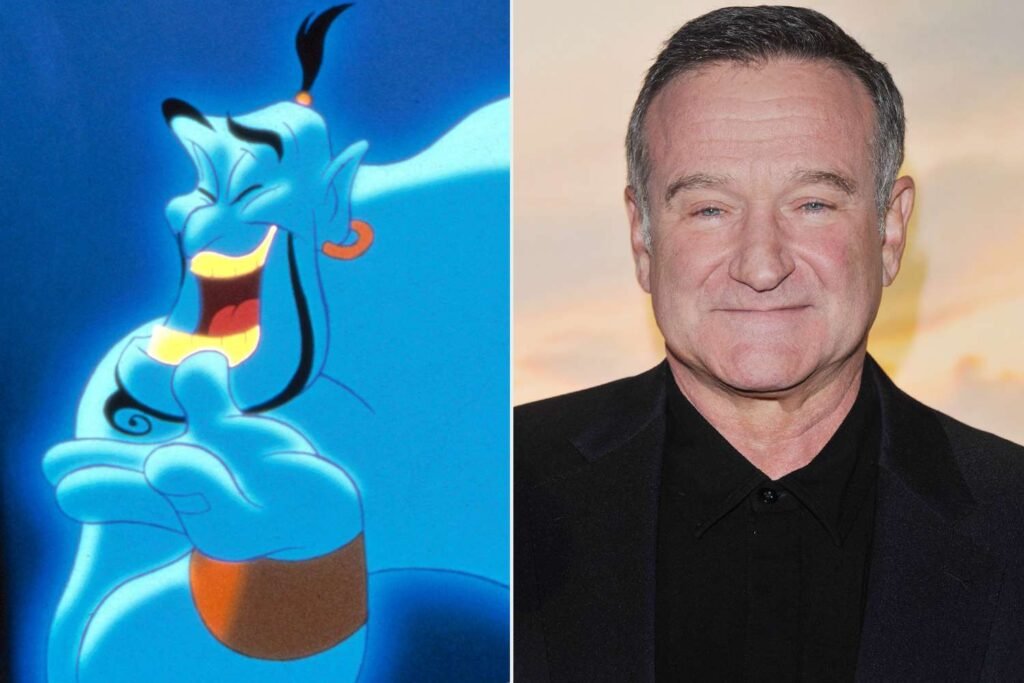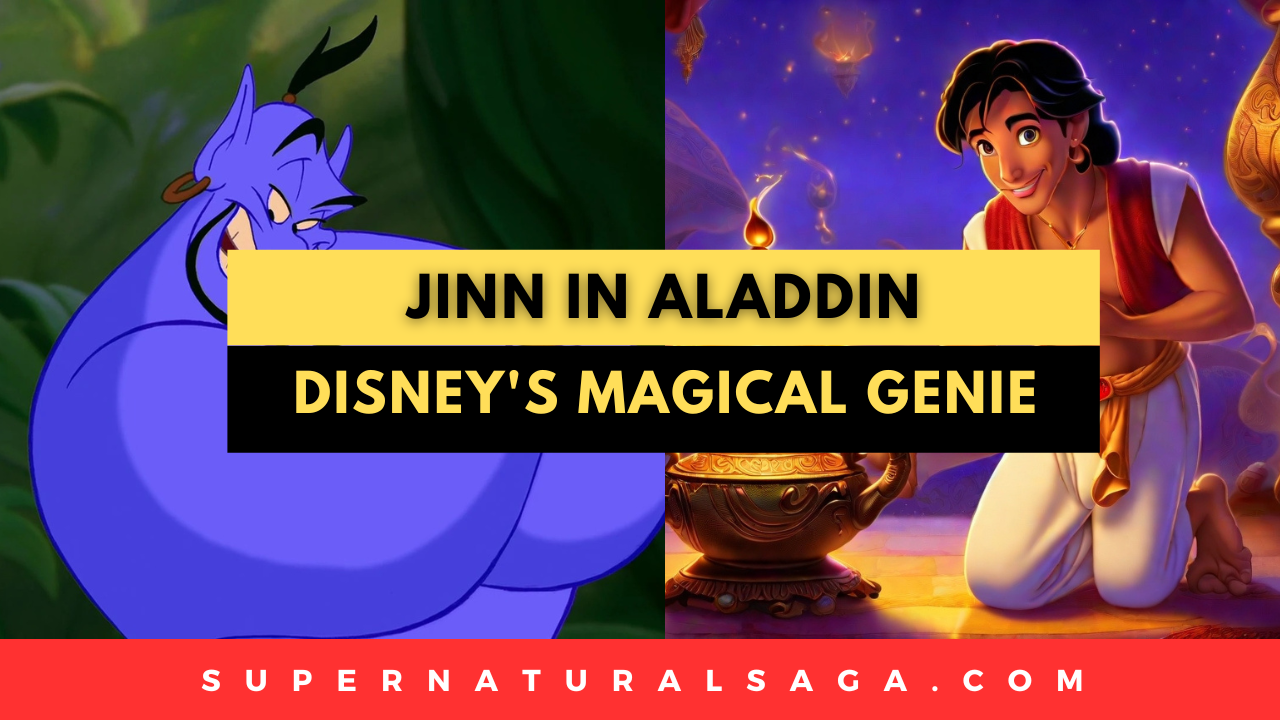Disney’s 1992 animated film “Aladdin” transported viewers to the magical world of Agrabah, where the young street thief Aladdin battled the evil sorcerer Jafar alongside Princess Jasmine.
However, one of the most iconic characters to emerge from this beloved family film was the fast-talking, shape-shifting comedic Genie.

Voiced by the late Robin Williams, the Genie became an instant fan favorite due to his zany personality and magical antics.
While the Genie made the story accessible for modern audiences, his origins derive from centuries-old Arabian and Islamic folklore.
The wish-granting jinn of ancient mythology served as the inspiration behind Disney’s family-friendly interpretation.
As Aladdin’s mentor and loyal companion, the Genie also subverted some Western stereotypes regarding genies in bottles.
This blog post will analyze the cultural history of jinn, Disney’s comedic adaptation, and the Genie’s lasting pop culture impact.
Understanding Jinn in Arabian Folklore
In pre-Islamic and Islamic Arabian mythology, jinn were supernatural creatures made of smokeless fire.
They existed in a parallel world alongside humans and had free will like mankind. Jinn could be good, evil, or morally ambivalent, much like people. However, they possessed magical powers, invisibility, and longevity far beyond human limitations.
Ancient Arabic texts contain many folk tales of jinn interacting with people, often tricking humans or offering wishes. When Islam arose, jinn took on a more sinister reputation for promoting evil.
The Quran confirmed that God created jinn as well as angels and humans. Belief in jinn remains common in modern Islamic cultures. Jinn also frequently appear in Middle Eastern folk tales.
Western views of genies stem more from European fairytales and the 18th century folktale collection “One Thousand and One Nights.” The wish-granting “genie in a lamp” concept popularized by these stories does not actually originate in authentic Arab folklore. In the original myths, jinn might offer wishes, but not as slaves trapped in bottles.
Disney’s “Aladdin” and the Genie

Disney’s version in “Aladdin” presents an adapted form of jinn by making the Genie a comedic sidekick bound to his magic lamp.
While still incredibly powerful and immortal, he uses his magical abilities for benevolent purposes, mainly to assist Aladdin.
Though the Genie can initially only exercise his powers when freed from the lamp by his master, his friendship with Aladdin ultimately releases him from this imprisonment.
The blue-skinned, shape-shifting Genie provides much of the film’s humor through pop culture references, impersonations, and wacky transformations.
Robin Williams’ manic improvisational style enhanced the character even further. This interpretation made the concept of an all-powerful wish granter more entertaining and engaging for modern children. The Genie’s playful personality balanced his mighty abilities.
Also read the difference between Genie and Jinn.
The Voice of the Genie: Robin Williams

Robin Williams’ vocal performance has been universally praised as one of the best elements of Disney’s “Aladdin.”
The producers originally planned for the Genie to be voiced by a serious classical actor and animated accordingly.
However, after hearing Williams’ hilarious improvised audition, the animators reworked the entire character around his off-the-wall humor and impersonations.
Williams recorded over 30 hours of material, much of which was ad-libbed. His rapid-fire shifts between different voices and personalities perfectly matched the Genie’s shapeshifting powers onscreen.
The success and appeal of the Genie character is inextricably tied to Williams’ energetic, family-friendly comedy. His work as the Genie is considered one of the legendary comedian’s most iconic roles.
Sadly, Disney could not replicate Williams’ brilliance in the 2019 live-action remake. But the original performance left a lasting impact on generations of fans and demonstrated the importance of perfect voice casting in animation.
The Genie’s Role in Aladdin’s Journey
The Genie functions primarily as a guide and mentor figure for the hero Aladdin over the course of his rags-to-riches character arc.
Despite his phenomenal cosmic power, the Genie uses his magic for the benefit of his master. He assists Aladdin in disguising himself as “Prince Ali” to woo Jasmine and later rescues him from drowning.
However, the Genie also helps Aladdin understand the importance of being himself and what truly matters in life. Their friendship teaches Aladdin to think less selfishly and demonstrate compassion towards others.
The Genie just wants freedom, while Aladdin learns how to become a selfless leader. This dynamic conveys positive themes about human bonds and growth.
In the end, Aladdin’s final wish frees the Genie from servitude. Their mutual care for one another’s happiness transcends the transactional master-slave relationship expected between jinn and humans. This resolution reinforces the film’s messages of loyalty and liberation.
Controversies and Criticisms
Despite the Genie’s popularity, Disney’s lighthearted interpretation of the jinn also sparked some controversy. Arab-American groups criticized the mixing of Arabic culture with Hollywood stereotypes.
For instance, the Genie’s dance sequence was seen as exploitative mimicry of black performers by having a blue shapeshifter emulate their dance moves for laughs.
The portrayal of the Middle East drew backlash as well. Lyrics describing the fictional city of Agrabah as “barbaric” and “where they cut off your ear if they don’t like your face” reinforced offensive Orientalist tropes.
While the producers claimed cultural consultation, critics argued Disney extracted entertaining elements from Arabic folklore without deeper understanding.
However, Disney has endeavored to increase cultural sensitivity in recent decades. Live-action remakes like 2019’s “Aladdin” visibly prioritized inclusive casting and accurate cultural details in costume design and choreography.
This demonstrated an evolution in Disney’s approach to representing diverse inspirations.
Beyond “Aladdin”: The Genie’s Enduring Popularity
The Genie instantly emerged as the most popular character from “Aladdin” upon its 1992 release. Robin Williams earned special recognition from the Golden Globes for his unforgettable voice performance.
The film’s success spawned two direct-to-video sequels and a TV series focusing on the Genie in the late 1990s.
Given his popularity, it was unsurprising that Disney incorporated the Genie into its merchandise and theme parks.
Plush toys, costumes, posters, pins, figurines, and more allowed fans to take home their own magical Genie. He also became a meet-and-greet character at Disney parks.
References to Disney’s Genie continue to thrive in pop culture today. Will Smith’s blue CGI recreation in 2019’s “Aladdin” reboot introduced the iconic character to new viewers.
The Genie’s phrases and mannerisms are frequently quoted and parodied online and in other TV shows. Nearly 30 years later, this wish-granting jinn remains beloved due to his humorous antics and heartwarming loyalty.
Conclusion
Aladdin’s all-powerful Genie merged ancient Arabic folklore with modern Hollywood magic to create one of Disney animation’s most legendary characters.
While adaptations of cultural myths should be handled respectfully, Robin Williams’ brilliant voice performance gave incredible heart and humor to the iconic wish-granter.
The Genie’s journey alongside Aladdin conveyed uplifting themes of freedom and friendship which resonated across generations. Though controversies arose regarding stereotypes, Disney learned from past critiques.
Ultimately, the Genie demonstrated how mystical lore can be reinvented through playful storytelling and inclusive representation to delight audiences worldwide.

